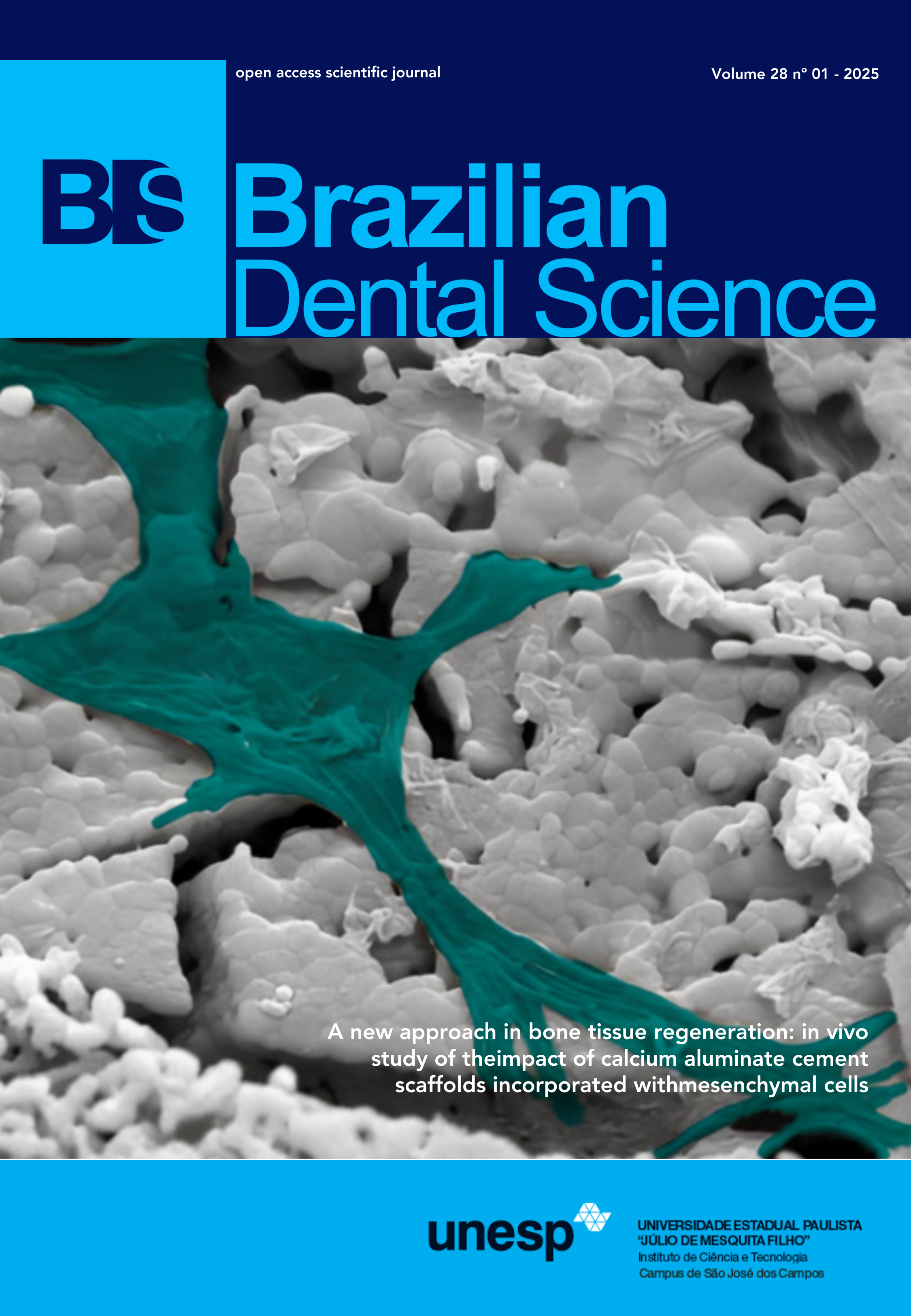Avaliação da infiltração marginal após clareamento dental e restauração com resina composta, variando o sistema adesivo
DOI:
https://doi.org/10.14295/bds.2002.v5i1.144Abstract
O objetivo deste estudo foi avaliar a infiltração marginal em restaurações com resina composta, variando o sistema adesivo, após técnica de clareamento dental. Foram utilizados 15 premolares humanos, nos quais foram confeccionadas, nas superfícies vestibulares e linguais, cavidades de classe V. O agente clareador, perborato de sódio acrescido de água, foi aplicado em todas as cavidades, que posteriormente foram seladas com cimento de ionômero de vidro. A mistura clareadora foi trocada duas vezes, em intervalos de quatro dias e após o clareamento, as cavidades foram neutralizadas com pasta à base de hidróxido de cálcio. As restaurações foram confeccionadas com resina composta, variando-se o sistema adesivo: nas cavidades vestibulares realizou-se condicionamento com ácido fosfórico 37% seguido da aplicação de sistema adesivo convencional, e nas cavidades linguais, utilizou-se sistema adesivo autocondicionante. Os dentes foram impermeabilizados (exceto 1mm das margens das restaurações), imersos em Rodamina B, e preparados para observação em estereomicroscópio. As amostras foram classificadas de acordo com escores de infiltração marginal e os dados submetidos ao teste de Mann Whitney, a 5% de significância. Verificou-se não existir diferenças estatisticamente significantes entre as duas condições experimentais avaliadas. Concluiu-se que o tipo de sistema adesivo (convencional ou autocondicionante) não interfere no selamento das restaurações após clareamento dental.
Downloads
Downloads
Published
How to Cite
Issue
Section
License
Brazilian Dental Science uses the Creative Commons (CC-BY 4.0) license, thus preserving the integrity of articles in an open access environment. The journal allows the author to retain publishing rights without restrictions.
=================
COPYRIGHT TRANSFER AND RESPONSIBILITY STATEMENT
(PDF)
For all articles published in the BDS journal, copyright is retained by the authors. Articles are licensed under an open-access Creative Commons CC BY 4.0 license, meaning that anyone may download and read the paper for free. In addition, the article may be reused and quoted, provided that the original published version is cited. These conditions allow for maximum use and exposure of the work while ensuring that the authors receive proper credit. All metadata associated with published articles is released under the Creative Commons CC0 Universal Public Domain Dedication.
Before the submission, authors must obtain permission to reproduce any published material (figures, schemes, tables, or any extract of a text) that does not fall into the public domain or for which they do not hold the copyright. Permission should be requested by the authors from the copyright holder (usually the Publisher, please refer to the imprint of the individual publications to identify the copyright holder).
The authors hereby attest that the study is original and does not present manipulated data, fraud, or plagiarism. All names listed made a significant scientific contribution to the study, are aware of the presented data, and agree with the final version of the manuscript. They assume complete responsibility for the ethical aspects of the study.
This text must be printed and signed by all authors. The scanned version should be submitted as supplemental file during the submission process.


